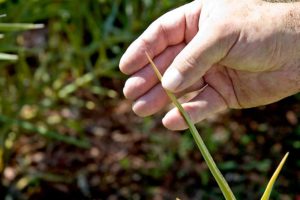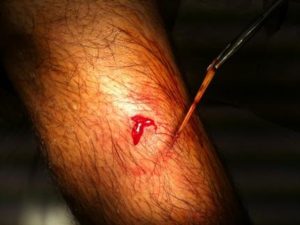
Wednesday May 10, 2017. What is believed to be the largest series of penetrating palm frond injuries has been presented at the Annual Scientific Congress (ASC) of the Royal Australasian College of Surgeons (RACS) this week in Adelaide.
The aim of the presentation, according to Gold Coast University Hospital Department of Orthopaedics Doctor Anthony Silva, is to highlight the possible risks from handling palm fronds, make recommendations on the diagnosis and treatment of these injuries, and highlight the effectiveness of gloves in injury prevention.
Dr Silva told the surgeons conference about a retrospective review of patients presenting to a regional tertiary hospital over a five year period with penetrating palm frond injuries.
“Patients were identified from emergency department records and ultrasound imaging reports.
“45 palm frond injuries were identified and of those, 40 were musculoskeletal and five ophthalmic,” Dr Silva said.
He said that 60 per cent came from gardening injuries and 35 per cent occurred in the workplace. The average time to presentation was 4.8 days with many patients delaying their presentation to hospital for treatment.
“Ultrasound scans, when performed, identified 100 per cent of retained foreign bodies. Of the 23 attempted foreign body removals in the Emergency Department, only 11 were successful. 21 patients required surgical exploration, with 2 requiring an additional irrigation and drainage for flexor tenosynovitis.
“63 per cent of bacterial cultures taken, were negative, but when positive, grew atypical organisms, including gram negative bacteria, that are unexpected in a plant puncture wound.
“Only two wound complications were recorded and one patient needed prolonged follow-up for stiffness following flexor tenosynovitis.

“Testing of puncture resistance of gloves showed that leather and latex coated gloves prevented puncture 18/20 and 19/20 times respectively, while cloth gloves were ineffective.
“Ultrasound is the preferred imaging for the identification of a retained frond and most cases required operative exploration under general anaesthetic.
“Tenosynovitis is an uncommon but serious complication with associated morbidity. Long-term disability after treatment is rare and antibiotic therapy should cover a broad spectrum.”
Dr Silva recommended the use of leather or latex coated gloves as well as protective glasses and boots for injury prevention.
Up to 1500 surgeons are meeting in the Adelaide Convention Centre this week for a series of workshops, discussions, Plenaries and masterclasses across a broad range
|